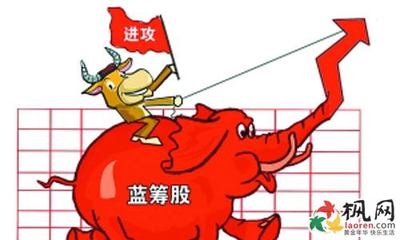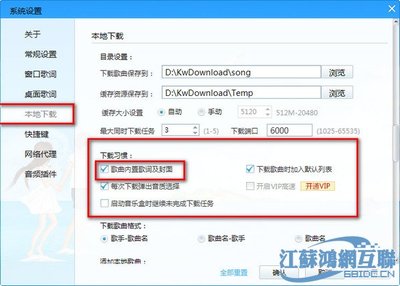
警惕办公室里的“怨妇”
作者:Shelley DuBois时间:2012年10月15日 来源:财富中文网
研究表明,尽管悲观、爱抱怨的员工只是少数,但是他们在工作中流露出来的消极情绪却会影响周围的人,毒害整个企业文化。但是,解决这个问题也有良方。只要找出办公室里积极向上的员工,充分发挥他们的作用,就能推动办公室的整体气氛向好的方向发展。 |
天知道,如今许许多多的员工都有理由抱怨。而且,几乎每间办公室里都会有一两个人抱怨起来过了头——满腹怨气,忿忿不平。 这些人就是管理专家罗伯•克罗斯所谓的“消极激励者”。“这些人的互动方式或语气,让整个工作环境变得窒息。” “让人窒息”无疑不利于形成良性的工作环境,很多员工可能都不想受这些消极激励者的影响。为此,他们首先要了解领导力专家称之为“非正式网络”的一个体系。这种网络存在于正式的企业生态链之外,建立在人与人之间的联系之上,从主要激励者到能量破坏者以及介于两者之间的人,无论职位高低,克罗斯声称,组织内非正式网络的能量流动图是可以绘制出来的。 如果你觉得这听起来有点不靠谱,你并不是唯一一个这么想的人。克罗斯和博斯公司(Booz &Company)高级合伙人乔恩•卡岑巴赫都曾和这样的高级经理合作过,他们拒绝接受这种观念,拒绝相信在他们所知和控制的工作场所架构之外还存在另外一个架构。卡岑巴赫说:“如果你让一家机构的高层来找出最佳激励者,他们肯定选不对人。” 但是,稍作挖掘,你就能发现这些网络。”我们可以制作简图和其他图例来显示人们之间的联系,”弗吉尼亚大学(Universityof Virginia)麦金泰尔商学院(McIntire School ofCommerce)教授克罗斯表示。这些简图可以显示出谁与谁之间在进行互动,互动的频率有多频繁。“然后,我们在上面叠加企业归属感和职业满意度得分,”克罗斯继续说。最后就可以找出员工中的积极推动者和消极激励者。 为什么要这么做?有证据表明,消极激励者的确会对公司造成伤害。《职业行为杂志》(The Journal ofVocationalBehavior)1994年刊登了一篇论文。文中,研究人员劳伦斯•尼科维兹和玛丽•罗斯诺维斯基发现,对工作前景悲观者的生产率往往不如他人,无论他们目前对工作有多满意。这篇报告称:“即便是在状况不错时,这些个体可能也会关注工作中不好的一面”。 他们还会把同事也拖下水。在一份尚未发布、正在接受同行审查的研究报告中,克罗斯还发现:“消极的相互影响造成压力,对衡量工作环境身心健康的一系列指标有显著影响。”换句话说,应对过多的消极因素会让人受不了。 这些消极的相互影响效应远超正面影响。尽管积极激励者在组织机构中的数量远超消极激励者,“消极激励者对工作表现和员工感受产生的消极影响是积极激励者产生积极影响的两倍还多,”克罗斯说。具体而言,克罗斯认为,约5%的员工带来了员工90%的与工作相关的苦恼。 那么,如何才能躲开他们的负能量圈之外呢?卡岑巴赫和克罗斯两人都认为,你不应试图改变他们的态度。从根本上怨恨工作的人会抵制任何试图改变他们的努力——他们的终极目标不一定是要感觉好一些。 | Goodness knows, plenty workershave reason to complain these days. And yet, most every office hasa couple people who take that right a little too liberally -- theyare, as a rule obtrusively upset. They are what management expertRob Cross calls "de-energizers:" "The people who just suck the lifeout of the room with the way they interact or tones theytake." Life-sucking is, without doubt,counter-productive to a healthy workplace, and many a worker wouldprobably prefer to avoid the negative effects of de-energizers. Todo so, they might first have to buy into a system that leadershipexperts call the "informal network." This network exists outside ofthe official corporate food chain. Instead, it is built onconnections between people who, regardless of rank, are either keymotivators, energy drainers, or somewhere in between. Cross claimsit's possible to actually map the energy flow through the informalnetwork at an organization. If all this seems a little floofyto you, you're not alone. Both Cross and Booz & Company seniorpartner Jon Katzenbach have worked with high-level managers whoresist the concept that there is a workplace structure outside ofthe one they know and control. "If you ask people in the upperlevels of an organization to identify the best motivators, theywon't pick them right," Katzenbach says. And yet, with a little digging,you can unearth these networks. "We can create diagrams and othervisuals that show the connections amongst the people," says Cross,who is a professor at University of Virginia's McIntire School ofCommerce. Those diagrams map who interacts with whom and how often."Then we overlay the engagement scores and career satisfactionscores," Cross continues, and you can pinpoint your motivating andde-energizing employees. Why do this? There's evidence thatde-energizers truly hurt a company. In a 1994 paper published inThe Journal of Vocational Behavior, researchers Lawrence Necowitzand Mary Roznowski found that people who have a baseline negativeoutlook about work tend to withdraw more from productive workbehavior than their colleagues, regardless of how satisfied theyfeel about their jobs. "It may be that these individuals focus onthe negative aspects of their jobs even under otherwise pleasantconditions," the paper suggests. They also tend to drag theircolleagues down with them. In unpublished research that's currentlyunder peer review, Cross has found that "negative interactions thatcreate stress have a significant effect on a range of measures ofphysical health in the workplace." In other words, dealing with toomuch negativity can make people sick. Those negative interactions arealso significantly more potent than positive ones. While there arefar more energizers than de-energizers in organizations, "thede-energizers have more than twice the negative impact on measuresof performance and employee well-being as the energizers havepositively," Cross says. Indeed, roughly 5% of employees accountfor 90% of people's work-related misery, Crossargues. So how do you stay out of theircircle of negative energy? You shouldn't try to fix their attitude,both Katzenbach and Cross agree. People who fundamentally resenttheir jobs will resist any effort to pull them up -- their end goalisn't necessarily to feel better. |
反之亦然。卡岑巴赫说,公司里有些人让其他人对工作感觉良好,从中获得满足,就算管理层从来没有肯定过他们的作用。 公司经理可以通过引导工作氛围做出改变。大多数员工既非头号推动者,也不是极端拖后腿的人;他们介于两者之间,但他们受这两者的影响很大。要让每个人都信心满满,最好的方式是让他们进一步接近活跃的积极推动者——创造机会让员工从最好的人那里进行学习。卡岑巴赫说,积极向上“是可以传染的”。 克罗斯称,积极的人采取某些特定的方式行事:“他们总是看到现实中的机会,而不是限制。他们寻找途径确保其他人也成为解决方案中的一部分。”卡岑巴赫说,他们也可以将这些特质传递给那些乐于接受的人,而且他们往往也知道哪些人最容易受到感染。 当然,在大公司,这需要真正了解情况的经理聘请专家从非正式网络中进行筛选,发掘最好的部分。克罗斯说,他通常与大公司的最高层一起工作。对于我们这些处在企业链底端的人们,或许得自己想办法了。 但这些经验仍然适用。简而言之,如果员工们的周围是那些让他们对工作和自己感觉良好的人,任何地方的办公室都可以变成令人更愉快的场所。 | But the opposite is also true.There are people at companies, Katzenbach says, who gainsatisfaction from making others feel good about their work, eventhough management may never recognize theirrole. Managers can make a difference byguiding the workplace environment. Most employees are neither topmotivators nor powerful downers; they are somewhere between the twoextremes yet highly influenced by both. The best way to geteveryone's spirits up is to position them closer to your activeenergizers -- create opportunities for employees to learn from yourbest people. Positivity, Katzenbach says, "is a catchingdisease." These positive players behave incertain ways, according to Cross: "They tend to see possibilitiesin situations rather than constraints. They find ways to make surethat others feel part of a solution." They can also teach thesetraits to people who would be willing to embrace them and generallytend to know the people they could most easily influence,Katzenbach says. Of course, it takes a prettyin-tune manager to hire experts to pick through the informalnetwork at a big company and then feed the best parts of it.Usually, Cross says, he works with the top layers of management atbig companies. For those of us at the bottom of the corporatechain, we may be left to fend for ourselves. But the lessons still apply.Simply put, offices everywhere might become much happier places ifworkers try to surround themselves with those who make them feelgood about their jobs and themselves. |
索达吉堪布:12大护地母护持藏地外道禁入 索达吉堪布:投生长寿天的过患
目犍连尊者训斥投生天界徒弟的公案索达吉堪布:堕入三恶趣解脱无期
揭秘泰国"人妖小姐"的幕后生活给理想一点空间
民间十二条躲避鬼神忠告索达吉堪布:人类社会对所谓“进步”应该反思
索达吉堪布:佛教中所说“边地”的涵义佛教徒与非佛教徒相处的原则
鬼来临时的几种征兆各大学校里都流传的恐怖事件
南京紫金山真实的鬼故事人心有力量,社会就有力量
索达吉堪布开示:何为八无暇?索达吉堪布:藏传佛教“共同”与“不共同”的涵义
修行为啥离不开信心和悲心藏密各派的共同加行为啥不创新?
明星遇鬼的10大诡异事件北京大兴女子监狱灵异事件
震惊世界的10大验证灵魂实验重阳节都是吃什么
天津市区发生的18起闹鬼事件中国教育“死不要脸”的无畏和无耻
拨云见雾理想才能照进现实绝对真实家乡十大诡异事件
阿底峡尊者将道次第密传仲敦巴的密意索达吉堪布:什么是闻法时的如法行为
索达吉堪布:哪些人是不合格的法器?索达吉堪布开示讲法者应具足的“六度”
河南鬼屋封村的真实灵异事件动物界十大吸血鬼
从澡堂子说到官场我们最需要的是人的教育
自由民主主义与极权专制主义的差别探秘传说与真实的吸血鬼
最富的国家,也是最穷的国家索达吉堪布:藏传佛教辩论的意义
索达吉堪布:放生时如何具足“六度”索达吉堪布:念佛时如何具足“六度”
如何在听一堂佛法课时具足“六度”湘西三大诡异事:赶尸放蛊落花洞女
中国人眼里的日本“八大怪”共浴索达吉堪布:依止上师必须断除的四种颠倒想
莲花生大士“灵牌之上灌顶的密意吴佩孚的人格与国格
给理想一点时间性感“贱妇”遮蔽了母亲的衰老容颜
合理的体制会制约当权者谋私利的冲动看完台湾传统文化方知大陆“四不像”
 爱华网
爱华网



